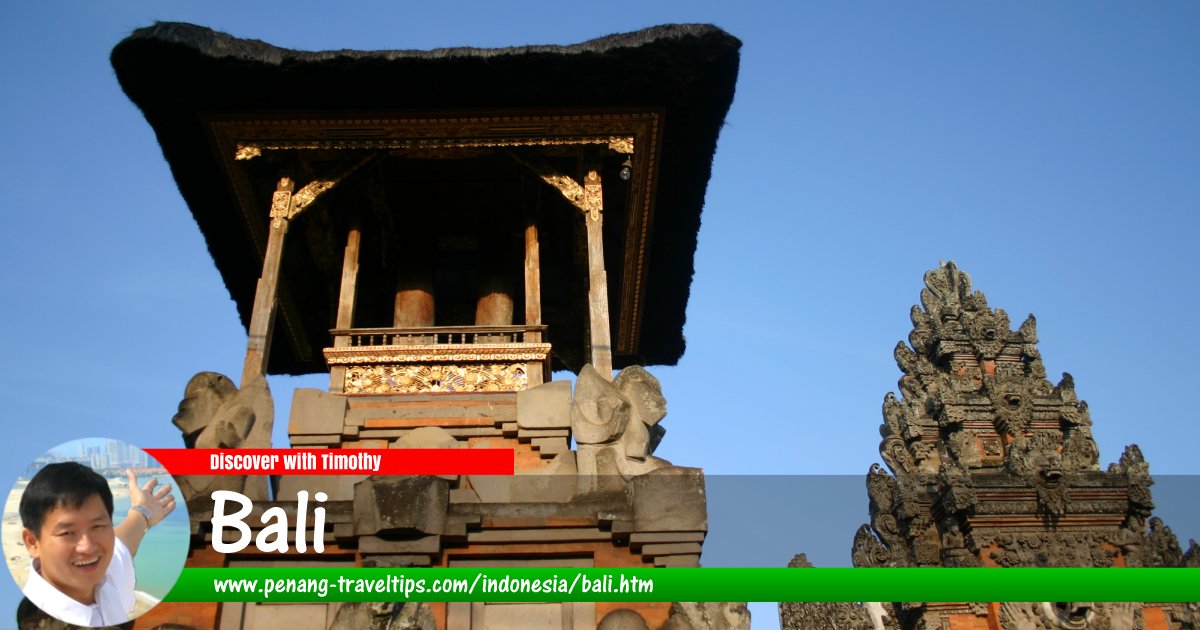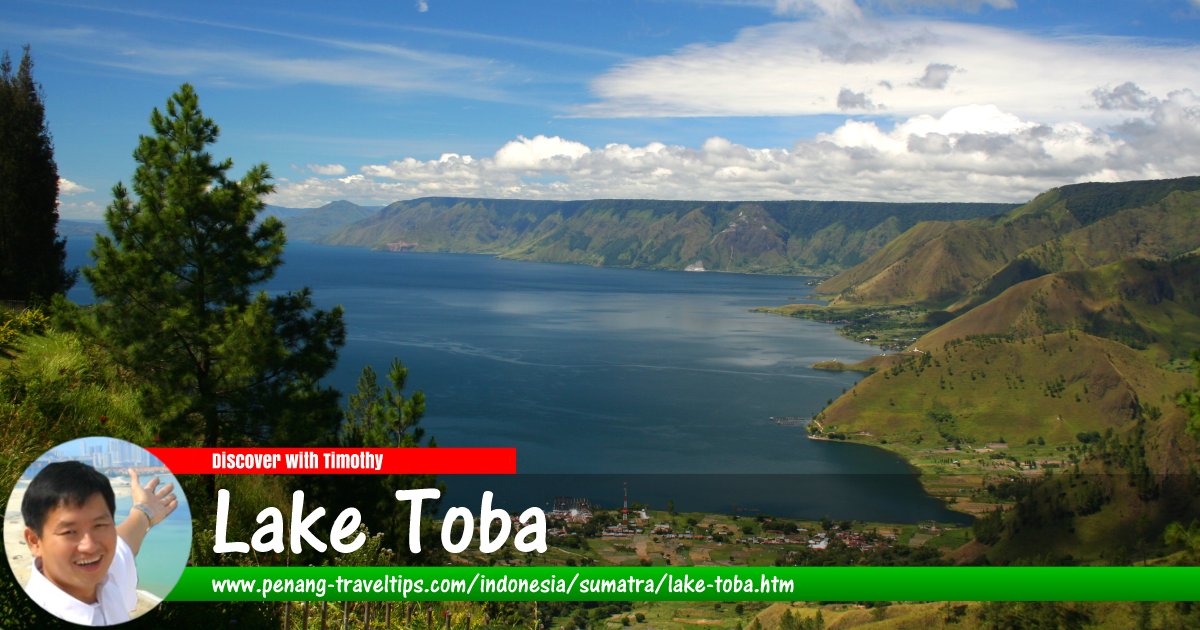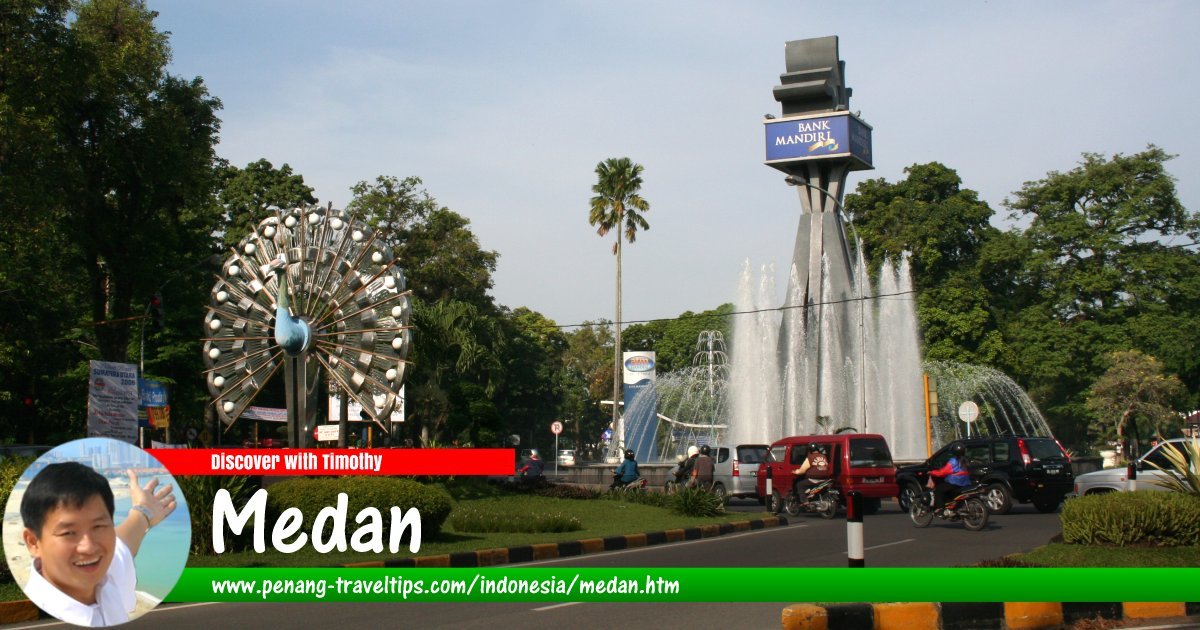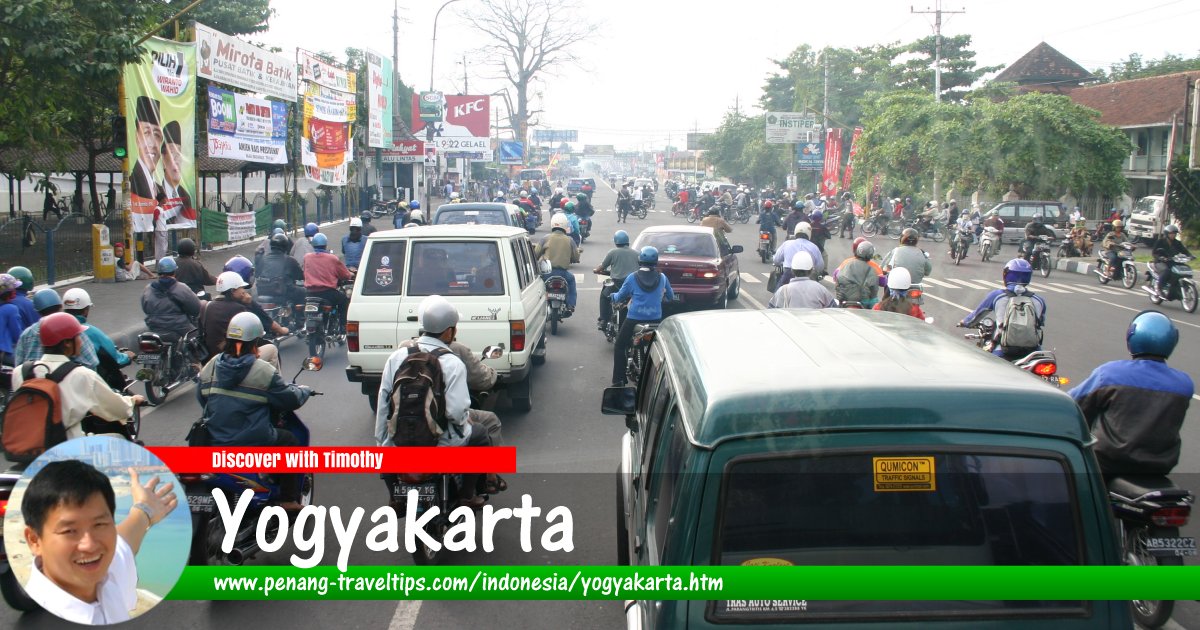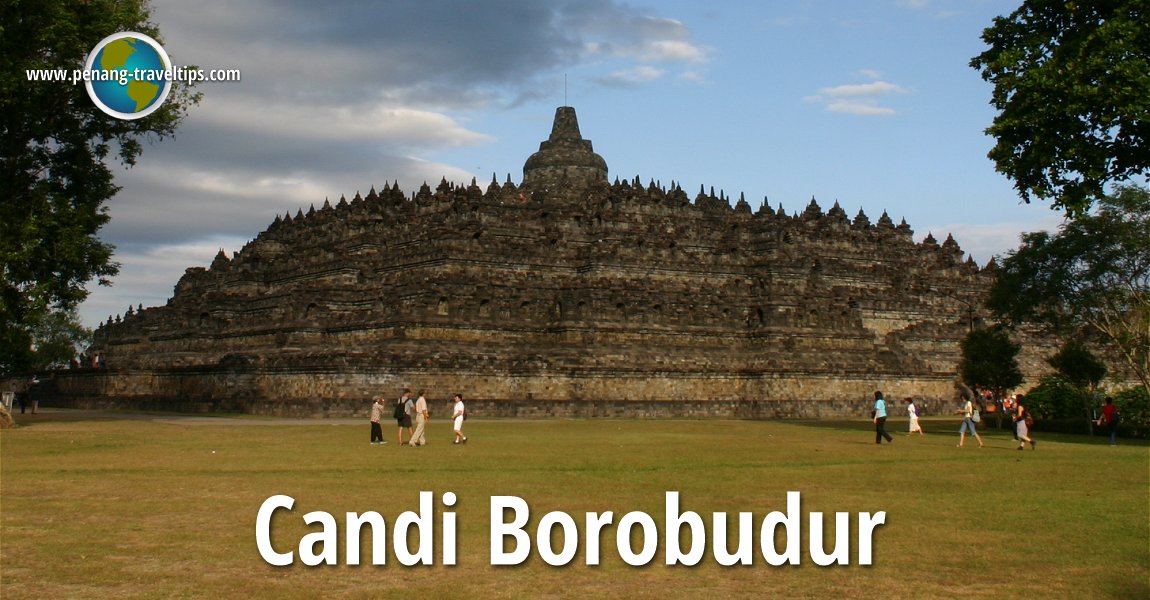 Candi Borobudur (22 June, 2004)
Candi Borobudur (22 June, 2004)
Candi Borobudur, or simply Borobudur in English, is Indonesia's biggest single tourist site as well as its best known World Heritage Site. Standing in the lush Kedu Plain of Central Java in Indonesia, this ninth-century Buddhist stupa is the largest Buddhist monument in the world, not to mention Java's biggest tourist attraction.
World Heritage Site Inscription Details
Location: S7 36 28 E110 12 13Inscription Year: 1991
Type of Site: Cultural
Inscription Criteria: I, II, VI
The Discovery of Borobudur
The earliest mention of Borobudur in Java's recorded history came not a monk. Nor was it from a scholar. No, the first person to stumbled on Borobudur was Ki Mas Dana, a rebel, who rose against the ruler of central Java but was defeated. So he fled to the mystical mountain called Bara-Budur, where the king's troops surrounded him and had him executed. Fifty years later, the monument was again mentioned, when another visitor, this time a crown prince, paid a visit in defiance to a prophecy that royalty who visited the "mountains of a thousand statues" would surely die. The rebellious young prince wanted to see the image of a "warrior in a cage". The king sent men to bring him back, but when they found him, he vomitted blood and died.And so was the curse of Borobudur ingrained into Javanese belief. It was a stone mountain which the Javanese know about, but avoided like a plague. And it would have remained so, to the loss of the whole world, if not for an insightful British lieutenant governor.
The year was 1814. Sitting in a mansion in Semarang, on Java's north coast, Stamford Raffles listened with rapt curiosity of this great temple ruin deep in the jungle of Central Java. Fascinated, Raffles sent H.C. Cornelius, his Dutch military engineer, to investigate. The Javanese brought Cornelius to a huge ruin that was so big that it took 200 men a whole month and a half to cut and burn the vegetation around it, and to remove the dirt cloaking the stones. Cornelius made many drawings, 39 of which still surviving, and dispatched these to Raffles.
The discovery of Borobudur took place 47 years before Henri Mouhot called the world's attention to another remarkable Asian ruin, Angkor of Cambodia. It was for European colonist their first glimpse of a high level of civilization flourishing in ancient Southeast Asia.
Construction of Borobudur probably took place around 760 AD, and completed around 830, making it older than the major monuments of Angkor but younger than those of Anuradhapura. Work on it probably did not progress at the same rate over that 70-year period. The construction proceeded in spurts, with many intervals when work stopped all together. Study showed that among the setbacks included a part that collapsed during construction. The plan probably changed several times, and these modifications resulted in even more work.
Restoration work for Borobudur started quite early. A committee was formed back in 1900 to consider measures for preserving it. The government selected a 28-year-old second lieutenant called Theodore van Erp to head the project, and he proved to be an excellent choice.
The committee's initial plan was intended simply to protect Borobudur from further damage. It called for the erection of a pyramidal roof of galvanised iron over the whole structure - an idea which was fortunately rejected. Instead, the decision was taken to fix the stones that are in danger of collapse, repair the balustrades and restore the gates and stupas. Van Erp started work in 1907. Although his initial order was simply to preserve the extant monument, he found so many missing pieces that he proposed an extensive restoration of all the balustrades, niches, stairs, gates and stupas.
Although this initial restoration did much good to Borobudur, it did not solve the problem of water percolating through the cracks between the stones down into the ground, and into the foundation. This causes the walls to sag and tilt until the whole structure threatened to collapse. So another committee was formed in 1929 to monitor Borobudur, but the onset of the Great Depression, followed by World War II prevented the colonial government from taking any further measures to deal with the problem.
It was only after Indonesia gained its independence that the new Indonesian government had a chance to take steps to preserve Borobudur. In 1955, with help from Unesco, the site was examined by a Belgian expert. Although the government earmarked funds for Borobudur restoration in 1964, work had to be suspended following a coup attempt.
Only in 1971 efforts recommenced to preserve the monument, and restoration official began in 1973. The project required the dismantling of the whole monument so that a new, complex drainage system can be put in place. This process is called anastylosis, and was successfully carried out in the 1930's on another Southeast Asian ruins, the temple of Banteay Srei at Angkor. It was the world's biggest jigsaw puzzle, with a million or so stones that had to be removed. The outer ones were carefully numbered, cleaned, treated and replaced. All told, the project cost $25 million, and took over ten years to complete, during which time Borobudur had to be closed to the public. It was only reopened to the public by former President Suharto on 23 February, 1983.
Borobudur was built by the Sailendra Dynasty. It is amazing to note that this dynasty appeared for only for a short period in Java history, from 778 - 856 AD. After 856 AD, the primarily Hindu dynasty was overcome by another, the Sanjaya Dynasty which is Buddhist. Some scholars believed that the Sanjaya Dynasty, which is credited with building the Prambanan temple, had appeared long before the shortlived Sailendra Dynasty, and continued after the demise of Sailendra Dynasty.
Borobudur is designed as a mandala - a geometric aid for meditation. It is in fact a model of the Buddhist cosmos. Borobudur has 10 levels, and these 10 levels are categorized into three distinct parts which correspond to the three divisions of the Mahayana Buddhist universe: khamadhatu, the low-life, so to speak; rupadhatu, the realm of "form"; and arupadhatu, or the state of detachment from worldly being. A pilgrim would circumambulate the monument in clockwise fashion, starting with the reliefs on the eastern staircase, and going around the monument before ascending to the next level, and so on, until he reaches the top. That's a journey of ten circles around Borobudur, covering a distance totalling five kilometres.
I have fond memories of my first encounter with Borobudur. It was on a night bus. An Indonesian movie was playing, a sort of epic drama. It was shot in Borobudur, and I watched transfixed at the massive stone monument, unable to believe that such a structure do exist in real life.
It must be close to thirty years later that the dream of visiting Borobudur come reality. Between then, the realisation that Borobudur is indeed real was reenforced by visits by relatives and friends, and my own mother, who brought back photographs she shot there.
It was a dream come true for me to finally stand on the terraces of Borobudur and view the lush Kedu Plain, with the horizon guarded by the active volcanoes. In order to fully appreciate the monument, I visited it twice on June 21 and 22, 2004. But even then, it was impossible for me to fully appreciate all the bas-reliefs. Many appeared eroded beyond recognition, having weathered the elements for so many centuries.
Through this page, I hope to give you a glimpse of this marvellous monument. I hope you will enjoy this online exploration and perhaps one day, have the chance to view it in person.
 Latest updates on Penang Travel Tips
Latest updates on Penang Travel Tips
 Discover with Timothy YouTube Channel
Discover with Timothy YouTube Channel
 PG Food Channel
PG Food Channel
 Learn Penang Hokkien YouTube Channel
Learn Penang Hokkien YouTube Channel
 SojiMart Videos
SojiMart Videos
 Destination Indonesia
Destination Indonesia
Latest from Discover with Timothy: Gurney Bay - what to see and do there
About this website

Hello and thanks for reading this page. My name is Timothy and my hobby is in describing places so that I can share the information with the general public. My website has become the go to site for a lot of people including students, teachers, journalists, etc. whenever they seek information on places, particularly those in Malaysia and Singapore. I have been doing this since 5 January 2003, for over twenty years already. You can read about me at Discover Timothy. By now I have compiled information on thousands of places, mostly in Peninsular Malaysia and Singapore, and I continue to add more almost every day. My goal is to describe every street in every town in Malaysia and Singapore.
Robbie's Roadmap
- Episode 1: Robbie's Journey to Financial Freedom
- Episode 2: Lost in America
- Episode 3: The Value of Money
- Episode 4: The Mentor
- Episode 5: The Thing that Makes Money
- Episode 6: The walk with a Billionaire
- Episode 7: The Financial Freedom Awakening
- Episode 8: Meet Mr Washington
- Episode 9: The Pizzeria Incident
Copyright © 2003-2024 Timothy Tye. All Rights Reserved.


 Go Back
Go Back